 |
 |
 |
| |
New HIV Comorbidity Index Linked to Mortality,
Can Outperform Other Tools
|
| |
| |
"Development and validation of a comorbidity index for people living with HIV and its ability to predict frailty and mortality"
17th European AIDS Conference, November 6-9, 2019, Basel
Mark Mascolini
A new comorbidity index (CBI), developed in the POPPY cohort and validated in the AGEhIV cohort, proved a good predictor of quality of life (QoL), frailty, and death [1]. In tests of concurrent validity (versus predictive validity), CBI generally outperformed a simple comorbidity count or the much-used VACS Index [2].
As HIV populations age, they acquire the comorbidities seen in all aging people. A comorbidity index should yield a single value representing the aggregate impact of all comorbidities in an individual on outcomes such as prognosis and QoL. Researchers who conducted this study proposed that a successful comorbidity index could identify high-risk individuals, help monitor interventions, and stratify or adjust for comorbidity in related research.
There is no lack of comorbidity indices for people with HIV. The most-used tools include the VACS Index [2], the Fried frailty phenotype [3], the Charlson comorbidity index [4], and a simple comorbidity count.
A POPPY/AGEhIV team developed the new CBI in POPPY, a UK/Ireland cohort of 1073 HIV-positive people at least 18 years old who completed a baseline visit in 2016. They aimed to validate the CBI in AGEhIV, a Netherlands cohort that includes 598 HIV-positive people who are at least 45 years old and completed a baseline visit in 2012.
Development of CBI included assessment of 65 comorbidities. The validation analysis focused on 42 of the 65 comorbidities, comparing CBI, comorbidity count, and VACS Index in predicting SF-36 quality of life and Fried frailty phenotype at baseline and at year 4. At year 6 the researchers compared CBI, comorbidity count, and the VACS index in predicting all-cause mortality.
Development of CBI involved deriving weights for each of the 65 considered comorbidities and their pairwise interactions. They calculated CBI for an individual as the sum of weights of all comorbidities and their interactions. For example, a person with depression, diabetes, and hepatitis B would have a CBI equal to the sum of weights for each of those three comorbidities (6.8 + 1.6 + 2.1) plus the weights for the interactions (0.6 + 0.6 + 1.0)/ 3 (the number of comorbidities) to yield a CBI of 11.2.
Median age of the 1073 POPPY participants stood at 52, close to the median of 53 for the 598 AGEhIV participants. About 86% of both groups were men and about 14% black. Median years since HIV diagnosis measured 13.2 in POPPY and 12.0 in AGEhIV, and median CD4 counts were 624 in POPPY and 565 in AGEhIV. About 90% of both groups had a viral load below 50 copies.
To test concurrent validity of the indices in the AGEhIV validation cohort, the researchers used Spearman's correlation (rho) to compare correlations with continuous outcomes (physical health QoL and mental health QoL) across three indices (CBI, comorbidity count, and VACS). For physical health QoL, rho for CBI differed almost significantly from rho for comorbidity count (-0.34 versus -0.30, P = 0.08), while rho for CBI differed highly significantly from rho for VACS (-0.34 versus -0.07, P < 0.001). For mental health quality of life, rho for CBI and comorbidity count were nearly similar (-0.18 and -0.15, P = 0.16), while rho for CBI differed significantly from rho for VACS (-0.18 versus 0.10, P < 0.001).
The researchers used the C-statistic to compare associations with binary outcomes (frailty, frailty development, mortality). C-statistics range from 0.5 to 1.0, and a higher C-statistic indicates greater predictive power. The C-statistic for not frail versus frail was 0.73 for CBI, 0.71 for comorbidity count (P = 0.27 versus CBI), and 0.63 for VACS (P = 0.02 versus CBI).
Predictive validity of CBI and comorbidity count were generally similar for change in physical health, change in mental health, frailty development, and mortality. CBI tended to have greater predictive prowess than the VACS Index for change in physical health (P = 0.17) and change in mental health (P = 0.05), while CBI and the VACS Index performed similarly in predicting frailty development and mortality.
POPPY/AGEhIV investigators concluded that CBI "shows strong associations with QoL, frailty and mortality, supporting its validity." Concurrent validity generally proved better with CBI than with comorbidity count or VACS Index, the researchers noted, while results for predictive validity were more mixed.
References
1. De Francesco D, Verboeket SO, Verheij E, et al. Development and validation of a comorbidity index for people living with HIV and its ability to predict frailty and mortality. 17th European AIDS Conference, November 6-9, 2019, Basel. Abstract PS4/7.
2. VACS Index Information and VACS Calculator. Frequently asked questions and summary of evidence as of July, 2017. https://medicine.yale.edu/intmed/vacs/vacsresources/vacsindexinfo/
3. Fried LP, Tangen CM, Walston J, et al. Frailty in older adults: evidence for a phenotype. J Gerontology. 2001;56:M146-M157.
4. Charlson Comorbidity Index (CCI). Predicts 10-year survival in patients with multiple comorbidities. https://www.mdcalc.com/charlson-comorbidity-index-cci
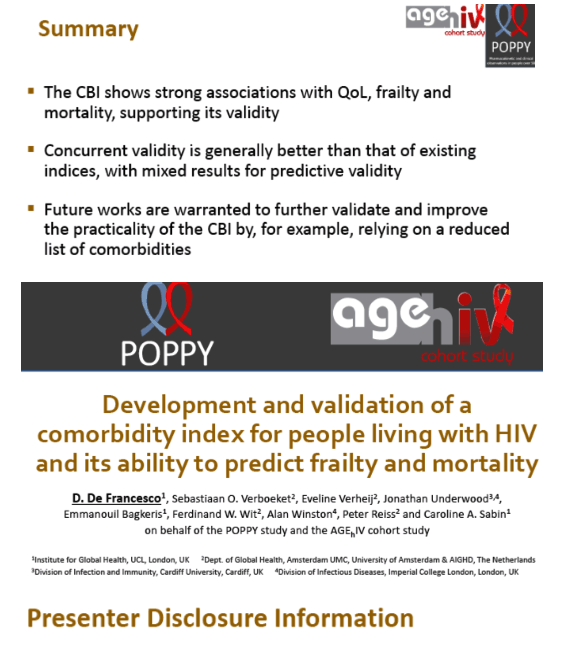
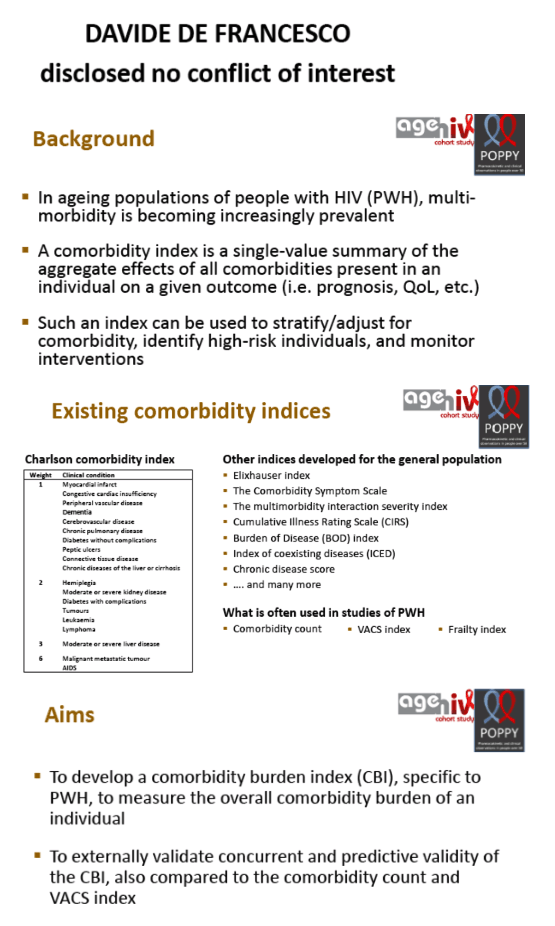
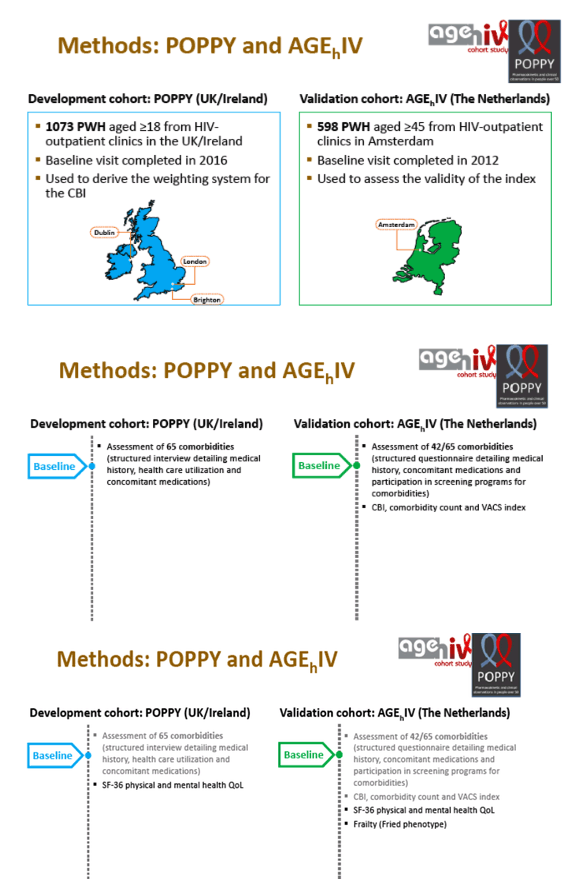
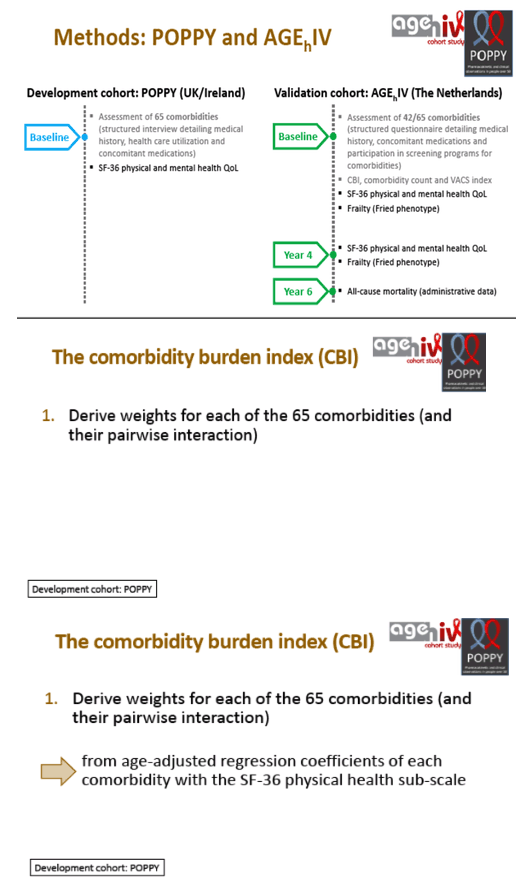
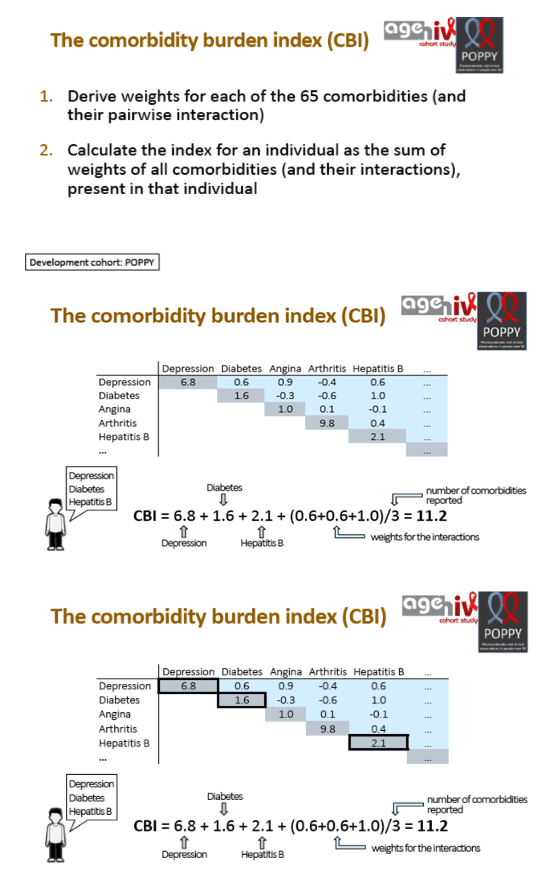
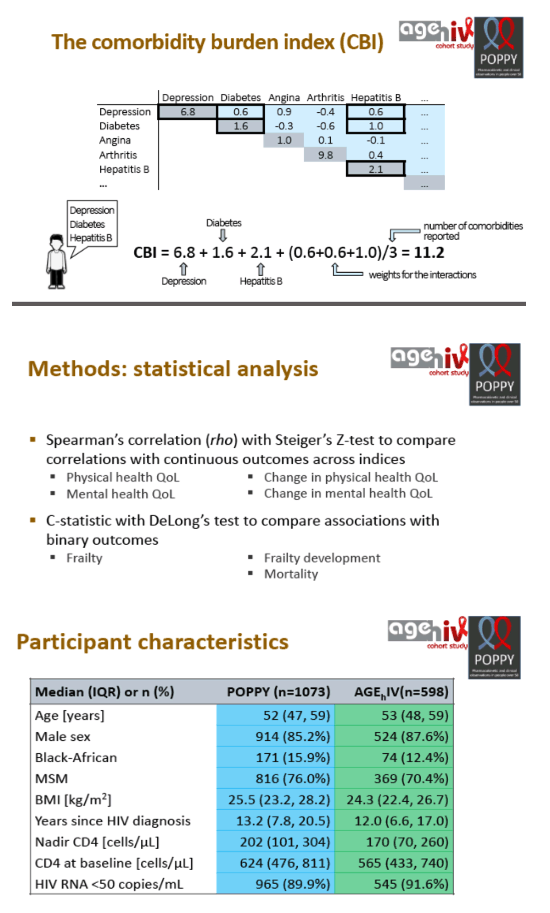

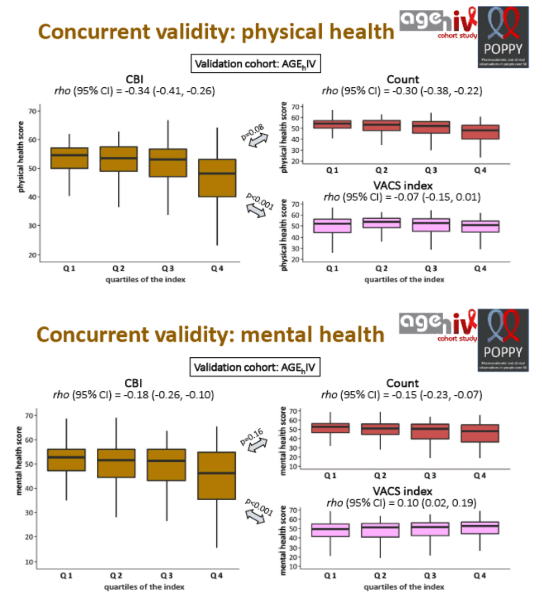
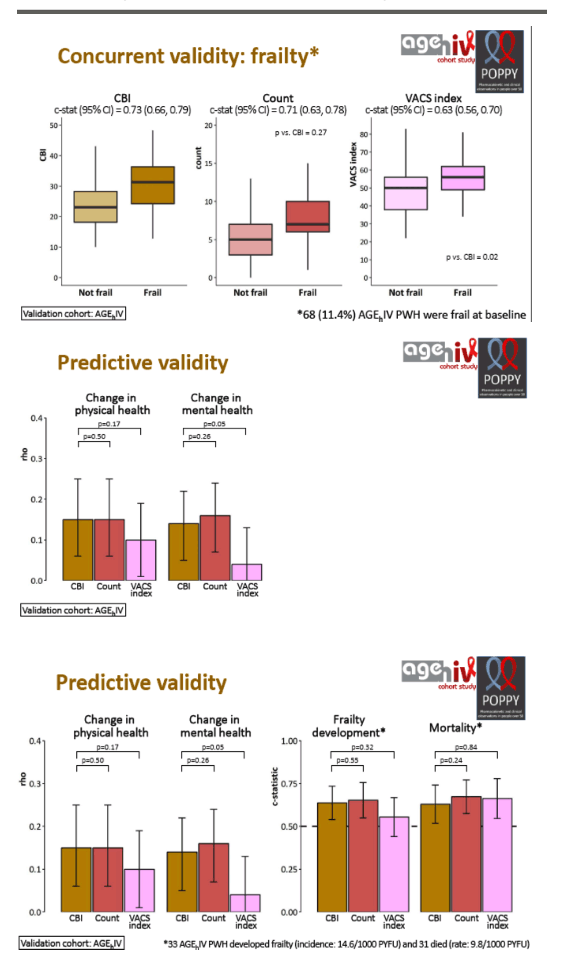
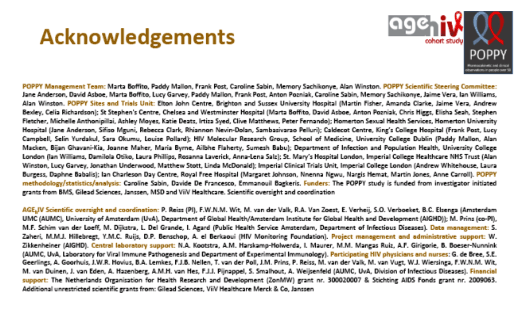
|
| |
|
 |
 |
|
|